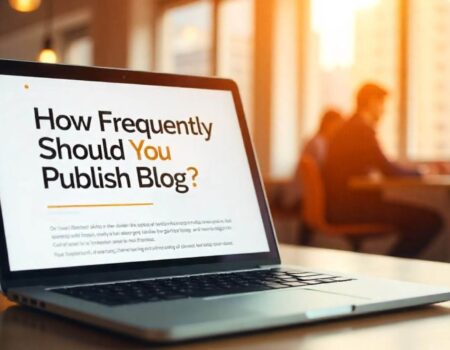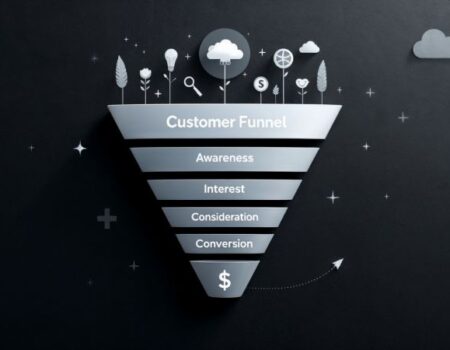What is an Audience Profile? How to Build One and My Favorite Examples
Thinking back to the marketing of my childhood—print media, billboards, and TV commercials—it’s incredible to see how much marketing has evolved.
Instead of broad-stroke campaigns based on geography, brands can reach highly specific consumer segments and deliver truly personalized experiences – all while keeping costs down.
Success starts with understanding your audience profile. This often-overlooked step in consumer research enables you to tailor your messaging for those most likely to convert, reducing wasted ad spend.
Below, I’ll share best practices for building an effective audience profile and provide examples to guide you. Let’s dive in!
What is an Audience Profile?
An audience profile details important information related to a hypothetical, but representative, buyer you’ve decided to target for a specific marketing or advertising campaign. An audience profile isn’t a broad, general group. Instead, it’s one fictitious person who you want to take action.
Remember, an audience profile isn’t the same as a target market and buyer persona.
Your target market includes every single prospective buyer for your product or service. For instance, perhaps you sell software that can be used for different use cases in different industries.
In this case, a target market includes the prospects in each industry who could benefit from your product — all with different needs, goals, and challenges. Meanwhile, a buyer persona is the final person who will ultimately purchase your product or service. In many cases, you‘ll want to market to anyone who can influence the final buyer. For instance, your audience profile might be a social media manager, even though the buyer persona is a company’s CMO because she’ll have the final sign-off. The audience profile is modeled after your business’s target audience and is meant to help you create a more personalized, higher-converting campaign.
Why Is Audience Profiling Important?
There’s a big difference between truly understanding your audience and merely assuming you do. When you have a deep understanding of your audience, you can craft impactful campaigns that address their goals, pain points, and challenges—giving your marketing a powerful edge.
Audience profiling helps you:
- Refine Your Strategies – As customer needs, behaviors, and preferences evolve, your marketing strategies should adapt. Audience profiling ensures you reach the right people at the right time through the most effective channels.
- Build Customer Loyalty – Targeted, relevant campaigns create meaningful customer experiences. When you consistently meet their expectations, trust grows, leading to stronger brand loyalty.
- Gain a Competitive Edge – Knowing your customers better than your competitors allows you to tailor your products, services, and marketing efforts to meet their needs—helping you stand out in the market.
Benefits of Audience Profiling
Personalization
One of the biggest benefits of audience profiling is the ability to create highly personalized campaigns—but do you truly realize just how impactful that can be?
Statistic: 94% of marketers say personalization boosts sales.
Personalization can make customers feel like a brand genuinely understands them. Take this example from Chase—I could have been served an ad about home loans, but as a full-time digital nomad, that wouldn’t resonate. Instead, I saw an ad highlighting travel perks, which immediately caught my attention because it aligned with my lifestyle.
Compare that to an experience I had on Facebook. I often browse the women’s section of Unbound Merino, considering whether to try Merino wool. But in one example, I was shown an ad for men’s clothing—something I’ve never looked at. As a consumer, it doesn’t make me think less of the brand, but it is a swing and a miss.
Modern Consumers Expect Personalization
Today’s consumers not only want personalized experiences—they expect them. Audience profiling allows you to craft targeted campaigns that deliver relevant content, offers, and recommendations to specific customer segments, making interactions with your brand more meaningful.
Team Cohesion
We’ve all been in marketing meetings where it feels like everyone is on a different page. A lack of alignment can quickly derail marketing efforts—and team morale.
Audience profiles help unify the marketing team around a shared vision. More importantly, they bridge the gap between marketing and sales, ensuring both teams are working toward the same objectives.
Statistic: Only 23% of sales professionals feel that sales and marketing are strongly aligned.
Accurate audience profiles create a common language and eliminate confusion. Instead of vaguely saying, “This campaign doesn’t feel targeted enough for fitness enthusiasts,” you can confidently say, “We need to tailor this more for Athletic Andy.” (Don’t worry—you’ll meet him soon!)
Shift Away From Third-Party Data.
Let’s not beat around the cookie jar: targeting specific audience segments was easier with cookies and third-party data. But cookies are so 2021, and now companies must find new techniques for audience analysis.
Statistic: 47% of marketers report that their companies are making a plan to approach cookie-free targeting.
A deep understanding of demographic details, qualitative research, and robust tracking of passive data will fill the holes in your strategy.
The Audience Profiling Process
Before we dive into the step-by-step guide for creating an audience profile, let’s take a step back and look at the bigger picture.
Start by Aligning with the Sales
Remember that only 23% of sales professionals feel well-aligned with marketing? Becoming part of that 23% is the first step to success. Since total sales are often the key measure of content marketing’s effectiveness, ensuring alignment from the start sets your marketing efforts up for better results.
A Case Study in Misalignment
I once worked with a menstrual cup company to develop a content strategy for their blog. Their ideal customer was described as a trendy, city-dwelling, frequent traveler. Some of their initial content ideas included:
- Best spas in NYC
- Long-haul flight tips
- Weekend trip packing must-haves
The issue? None of these topics are directly connected to sales. To truly align marketing with sales, the content needed to focus on the needs of people who menstruate. Articles like “Can You Visit a Spa During Your Period?” or “Travel Tips for Managing Your Period” would have been far more relevant and effective.
Select Audience Segment.
Which audience segment will you begin with? Some ideas are:
- The customer group with the highest potential lifetime value.
- Your most underserved customer group.
- A customer segment that’s gone cold.
- Your competitor’s customers.
Choose The Desired Action.
What action do you want this segment of your audience to take? Your desired audience action can be at the top or bottom of your sales funnel. Some ideas include:
- Sign up for a freebie in exchange for joining your email list.
- Attend an upcoming event.
- Make a purchase.
With your desired outcome identified, you move on to campaign execution.
Execute the Campaign.
What’s the best place to reach your audience? Which platform and which content type on that platform? It’s not as easy as it used to be! Simplifying pointing to Instagram and rolling out a static-content campaign is a risk.
You Can Choose From:
- Long-form product explainer videos.
- Short-form customer reviews.
- Educational carousel content.
- To-the-point written text.
- Brand photo shoots.
And, that‘s all on Instagram alone! Between reels, stories, and grid posts, the world is your oyster (I’ll pass you the tissues). I kid because I love marketing and all it‘s capable of, even when it feels like it might crush me beneath its weight. We’ll dive deeper into this in the best practices below.
What to Include in an Audience Profile
To build an accurate audience profile, gather the following key information:
Demographic Information
This includes essential personal details such as location, age, education, occupation, and income level.
Psychographic Information
These are deeper insights related to personality, interests, attitudes, and lifestyle choices.
Goals, Challenges, or Pain Points
Identify the specific problems your audience faces that your product or service can solve. What are their pain points? What keywords or search queries do they use when looking for a solution?
For example, if you’re offering an 8-week fitness coaching program, your audience might struggle with staying motivated or finding time to exercise.
Values
Understand what your audience cares about the most. Do they prioritize sustainability, work-life balance, or personal growth? Recognizing these motivators helps tailor your messaging effectively.
Preferred Channels
Find out where your audience spends the most time. Do they engage more on social media platforms like Instagram and LinkedIn, or do they rely on search engines like Google for research? This insight helps optimize your outreach strategy.
Preferred Content Types
Once your audience discovers your brand, what format do they prefer? Blog posts, ebooks, case studies, podcasts, or video content? Delivering information in their preferred format enhances engagement.
Buying Behavior
Determine how your audience makes purchasing decisions. Are they impulse buyers, or do they take weeks to research before committing? Do they purchase year-round, or is their demand seasonal?
For example, if you sell camping gear, your audience may be more active in spring and summer.
Audience Profile Examples
How do all these elements come together? Let’s look at an example.
B2B Audience Profile Example: Marketing Mark
Instead of targeting all marketers broadly, let’s focus on a specific persona—Marketing Mark.
- Demographic Information: 28–35 years old, primarily male, based in San Francisco. Works in digital marketing for a SaaS company.
- Psychographic Information: Passionate about data-driven strategies and emerging marketing trends. Enjoys networking at industry events.
- Goals, Challenges, or Pain Points: Wants to improve lead generation and customer retention through automation but struggles with tight budgets and proving ROI to leadership.
- Values: Believes in innovation, efficiency, and staying ahead of competitors.
- Preferred Channels: LinkedIn and Twitter for industry news, YouTube for learning new marketing techniques.
- Preferred Content Types: Whitepapers, webinars, and in-depth case studies.
By tailoring campaigns to Marketing Mark’s preferences, brands can create highly relevant messaging that resonates and converts.
B2C Audience Profile Example: Active Alex
Marketing Mark focused on work, but what about a profile based on hobbies and lifestyle? Let’s introduce Active Alex.
- Demographic Information: 30–45 years old, living in Denver.
- Psychographic Information: Loves outdoor activities, eats healthy, avoids alcohol, and tracks fitness progress. Stays active every day.
- Goals, Challenges, or Pain Points: Wants high-quality, durable, and eco-friendly sportswear. Struggles to find versatile activewear that’s stylish and professional.
- Values: Cares about sustainability and being part of a like-minded fitness community.
- Preferred Channels: Facebook and Google search.
- Preferred Content Types: Blog articles and short social media videos.
Audience Profile Example: Cautious Claire
Marketing Mark and Active Alex are made-up personas, but they are detailed enough to fit real brands. Now, let’s create an audience profile for a real niche website: A Guide to Hiking Trails—a site for beginner hikers looking for safe and scenic trails.
Since the website focuses on organic content, our audience profile will help guide the type of blog posts and social media posts we create.
- Demographic Information: 40–65 years old, lives in the U.S., and has little experience hiking or traveling alone.
- Psychographic Information: Has spent most of their life caring for family or focusing on work. Now, they want to do something just for themselves—hiking as a way to reflect and recharge.
- Goals, Challenges, or Pain Points: Feels nervous about outdoor adventures. Inspired by travel blogs but overwhelmed by the planning process. Unsure how to prepare for long hikes.
- Values: Believes in hard work and is willing to train. I Want to be part of a supportive hiking community.
- Preferred Channels: Facebook, Pinterest, and Google search.
- Preferred Content Types: Written guides with images to help them visualize the journey before experiencing it.
How to Write an Audience Profile
1. Define Your Campaign Goal
Before creating your audience profile, understand who you’re targeting.
If you’re trying to increase product sales through social media ads, your audience profile should be similar to your ideal buyer.
If you’re aiming to grow YouTube views, your audience profile should reflect the type of viewers who watch similar content.
Example
Activewear brand FlexFit ran an ad campaign promoting a sports skirt featured in a viral video. The ad was designed to boost product sales while also increasing brand awareness.
By knowing your audience, you can tailor your marketing strategy to speak directly to them.
2. Dive Into Data and Analytics
Once you’ve established your campaign goal, it’s time to use data and analytics to create a clear persona prototype.
Start with Google Analytics to gather demographic insights on your website visitors. Look at age, gender, location, and the devices they use. It’s also important to track where your traffic comes from — whether it’s organic search, social media, email, or paid ads.
Next, tap into your CRM data to dive deeper into customer behaviors. This could reveal industries that convert best or specific pages on your site with the highest conversion rates. This will help you refine your audience profile based on actual customer actions.
Use channel-specific metrics to fill in any gaps. For example, if you’re planning a Google Ads campaign, analyze your previous high-performing ads to identify who clicked on them and what that says about their interests.
If you’re focusing on Facebook ads, the lookalike audience feature can help you target people who resemble your best existing customers. This is often the reason you’ll see ads like the Outsite ad on your feed. If you and a friend share similar interests, such as being self-employed female digital nomads in your 30s, Facebook’s incredible profiling engine might deliver that exact ad to you — not through chat, but through top-notch audience targeting.
3. Use Qualitative Data to Identify Challenges
To fill in the challenges, goals, or pain points section of your audience profile, start by looking at customer reviews or conducting a focus group (more on this in a moment). This will help you pinpoint the major challenges your audience faces.
You can also leverage keyword research to identify high-intent search terms related to your product or service. This helps uncover potential pain points that you might not have considered.
For example, let’s say you’re creating an ad campaign for a social media listening and scheduling tool. You could use tools like Ahrefs to explore common questions related to social media management, which would give you deeper insights into the challenges your target audience is facing.
4. Collect Psychographic Data
If you’re in a B2C business, start by analyzing content from top industry influencers to gather psychographic data on your audience.
For instance, if you’re selling fitness equipment, pay attention to social media profiles and blog posts from well-known fitness influencers. What values do they emphasize? What activities do they prioritize? What passions do they share with their followers? These behaviors and interests are crucial in shaping your audience profile.
If you’re working in B2B, consider reading industry reports, case studies, or attending webinars to understand the motivations, values, and behaviors of your target persona within a specific industry. These insights will help you craft a more accurate and nuanced profile.
Partner with our Digital Marketing Agency
Ask Engage Coders to create a comprehensive and inclusive digital marketing plan that takes your business to new heights.
Contact Us
Getting Started
Are you surprised by how much goes into crafting a simple audience profile? It can feel overwhelming at first, but the impact of a well-thought-out profile is truly game-changing.
The best part? These profiles are free to create but can have an immeasurable effect on your marketing strategy. I value my persona, Nervous Natalie, and I hope you’ll find the same value in your target audience profiles. Now, let’s get to work creating the content they crave!
At Engage Coders, we help you reach your ideal customers by creating tailored digital strategies. From building websites that convert to running targeted marketing campaigns, we focus on understanding your audience and delivering results.
Let us help you grow your business!







